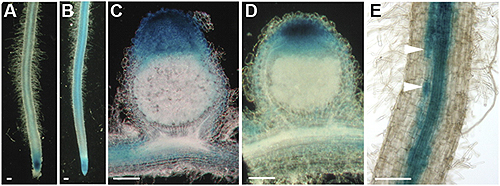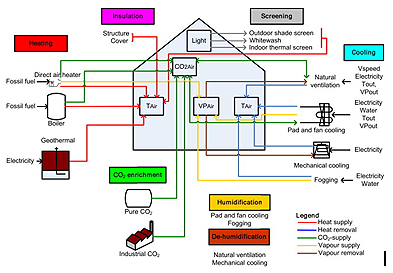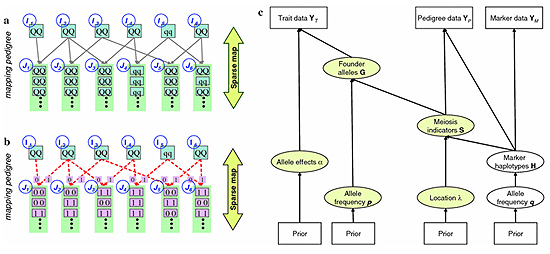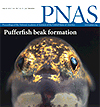博文
瓦赫宁根植物科学组2012年Highlight
|
Wed 12/19/2012 - 16:59
Using nitrogen from the air may well not be limited to legumes in
future
(Molecular biology)
Almost all plants possess the
molecular and cell biological requirements to fixate nitrogen from the air, just
like legumes do. Research showed the similarity of the rhizobium symbiosis in
legumes and the symbiosis with mycorrhizae of other plant species. This implies
that many plants are more or less pre-equipped for symbiosis with rhizobium and
thus for nitrogen fixation from the air. This result may be of large impact for
future agriculture. Plants that are able to ‘harvest’ nitrogen from the air need
less fertilisers and are thus a more sustainable source of food and plant based
raw materials.

Mind the enemy of the enemy of your
enemy!
(Entomology)
Plants under attack of caterpillars call for help by the production
of volatile compounds that attract parasitic wasps. These wasps help the plant
to limit the damage. These compounds can also be detected by other insects. A
recent study shows that other parasitic wasp use these compounds to find the
parasitic wasps they need for their reproduction. Using parasitic wasps can be
an effective approach for biological control of pests, but efforts to optimize
this using plant produced volatile compounds may therefore work
counterproduictive.
Well performing internal logistics crucial for
directed growth of plants
(Cell biology)
In plant cells, actin
filament bundles serve as tracks for organelle movement using myosin proteins as
an ‘engine’. This movement can be observed in the cytoplasm using a simple
light microscope. In this study we blocked the actin-bundling protein villin,
which leads to thin bundles only and individual actin filaments. Blocking the
transport this way allows the plant to grow but makes the directed growth of
plant organs like leaves more variable. This shows that sub cell logistics are
of importance to the directed growth of plant organs.
Model-based worldwide greenhouse design: why greenhouses in Spain differ from greenhouses in the Netherlands
(Wageningen UR Greenhouse Horticulture)
Wageningen Ur Greenhouse Horticulture developed a designing method that yields greenhouses with a maximised annual Net Financial Return, based on local climate conditions and local economic aspects. The designing method combines three models: a greenhouse climate model, a crop growth simulation model and an economic model. The method has been tested for Spain and the Netherlands. Of course the new method yields two very different designs. The greenhouse for Spain has a relatively large specific ventilation area, seasonal whitewash and a low-capacity direct air heater was selected. In contrast, for the Netherlands, a aluminium thermal screen and no whitewash would give the best result.

'Flip-flop' switch discovered for asymmetric cell
division
(Plant Developmental Biology)
For growth and
development, organisms must produce tissues with distinct functions. These
different tissues are derived from stem cells. How stem cells divide to create
new cell types is known as asymmetric cell division, and is obviously crucial to
the overall development of the organism. In plants, whose cells cannot migrate,
the location where a stem cell undergoes asymmetric cell division is also
crucial, since it ensures that these tissues develop in the correct place.
Mathematical modeling showed that in roots asymmetric cell divisions are only
switched on after integration of radial and longitudinal information, determined
by a translation factor and auxin distribution, respectively. Coupling of
cell-cycle progression to protein degradation resets the circuit, resulting in a
flip flop that constrains asymmetric cell division to the stem cell region.

Why is there genetic variation in
photosynthesis of rice and does it help?
(CSA: Crop
Physiology)
Photosynthesis of rice was dissected into stomatal conductance,
mesophyll conductance, electron transport capacity and Rubisco carboxylation
capacity. The genetic variation was mainly associated with the genetic variation
in stomatal conductance and mesophyll conductance. The impact of environmental
factors on photosynthesis is mainly associated with effects on stomatal and
mesophyll conductances and now we have found evidence that apparently the
genetic variation works through the same types of influences. Moreover, we have
found that virtual ideotypes can have a 17.0% higher photosynthesis and a 25.1%
higher transpiration efficiency than the best genotype investigated.
Better crops by smarter use of marker and pedigree
information
(Biometris)
How to breed for better crops in a short
time? Breeding companies do so by designing multiple crosses for variety
selection and detection of chromosomal regions of interest. A big breeding
company contracted Biometris to help making better use of the data of their
breeding program. Biometris developed an quick, efficient and patented way to
exploit the relatedness of parents in multiple connected crosses. By capturing
the ancestral marker and pedigree information in to local identity-by-descent
matrices, the power and accuracy of detection of chromosomal regions of interest
was significantly improved, without increasing the computational demand of the
Bayesian analysis.

Phosphate problem less urgent than expected
(Plant production systems)
Producing sufficient and proper food
for the global population in 2050 will probably require 40% less phosphate than
was previously assumed, which means that the phosphate supply will last longer
than expected. This is the conclusion of research carried out by Wageningen
University and published in the scientific magazine PNAS. For the first time the
scientists used computer models capable of taking into account the amount of
phosphate left behind in the soil after harvesting a fertilised crop. This
enabled a more precise calculation of the required quantity of phosphate,
particularly for land on which more phosphate than necessary has been used for
years on end.
Mosquito immunity squashed by West Nile
virus
(Virology)
West Nile and dengue viruses are transmitted by
blood-sucking mosquitoes and pose a serious threat to human health. During
infection, these viruses produce a non-coding viral RNA that is required for
pathogenicity. The Laboratory of Virology of Wageningen University now shows
that this non-coding viral RNA is a decoy molecule for Dicer and shuts down the
mosquito immune system. This research explains how West Nile and dengue viruses
can productively replicate in mosquitoes for subsequent transmission to
humans.

Complex agro-ecosystems can support food
security in a changing climate
(Farming Systems
Ecology)
Complex agro-ecosystems can support ecological processes of nutrient cycling and pest control, which may lead to higher and more stable yields. Research showed that enhancing the complexity of a rice production system by adding combinations of compost, azolla, ducks and fish resulted in strongly increased grain yields and revenues in a season with extremely adverse weather conditions on East Java, Indonesia. In the most complex system comprising all components the highest grain yield was obtained. If smallholders can be trained to manage these systems and are supported for initial investments by credits, their livelihoods can be improved while producing in an ecologically way.

International consortium unravels tomato
genome
(Bioscience)
Wageningen UR (University & Research
centre) and KeyGene together with their partners in the Tomato Genome Consortium
(TGC) have sequenced the genomes of the domesticated tomato and its wild
ancestor, Solanum pimpinellifolium. This achievement is expected to lower costs
and speed up efforts to improve the worldwide tomato production, making it
better equipped to combat pests, pathogens, droughts and diseases that plague
growers. The work may also speed up improvements to other crops.
https://wap.sciencenet.cn/blog-541506-644445.html
全部精选博文导读
相关博文
- • Minerals线下恳谈会:履践致远、与时偕行——对话中国科学院广州地球化学研究所期刊合作学者
- • 聚英才 建高地 | 北京理工大学“特立青年学者”全球招聘开启
- • 700年后日本或濒临灭绝?日本学者推算预测:届时或仅剩1名15岁以下孩子
- • [转载]【同位素视角】非英语母语学者如何区分’e.g.’, ‘i.e.’, ‘namely’与‘such as’等混淆难题
- • 美国佐治亚大学等机构学者:刈割策略对Bulldog 805紫花苜蓿+Tifton 85狗牙根混播草地产量及品质的影响
- • 美国堪萨斯州立大学、密苏里大学等机构学者研究成果:土壤水分管理策略和品种多样性对紫花苜蓿产量、营养品质和农场盈利能力的影


